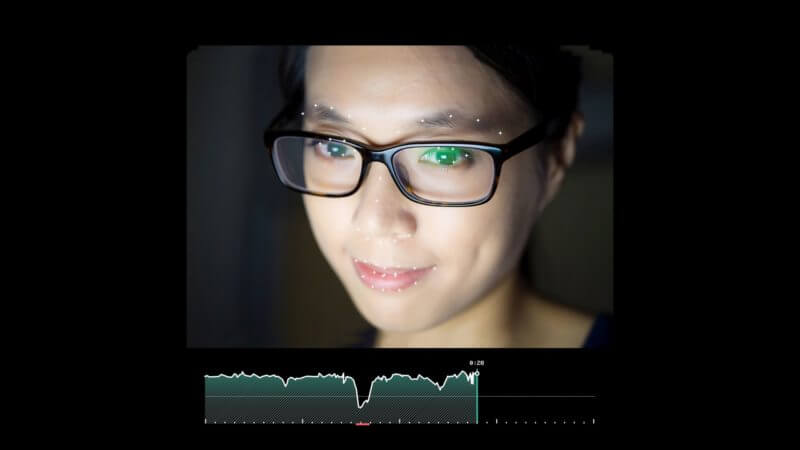Realeyes says it can measure if people are paying attention to ads
The company's new Attention Metric measures actions that signal a lack of attention, such as yawning, blinking and eye movements.

Realeyes’ dashboard measuring the attention of a test viewer.
As artificial intelligence (AI) and its machine learning subset get more advanced, analytics get deeper and more nuanced. One proof point: Realeyes’ new technology that can tell advertisers if test viewers are paying attention or not.
Emotional tracking is not new. Tobii has been offering eye tracking analytics for several years and Truthify launched its emotional AI this summer.
But Mihkel Jäätma, CEO and co-founder of Realeyes, says that Realeyes is the only analytics provider that measures attention.
“Attention is the biggest topic right now because it’s so hard to capture,” Jäätma said.
How it works. Realeyes uses machine learning to teach computers how to recognize emotional states and certain actions that signal a lack of attention, such as yawning, blinking and eye movements. The machines learned how to identify various states of attention by analyzing 29,000 videos showing various scenarios that were labelled by human annotators.
Through its platform, the company provides analytics and analysis that shows the volume and quality of attention that advertisers’ content attracts, including a second-by-second analysis of where attention rises or falls. Realeyes also provides metrics that tell marketers how their content stacks up against competitors.
“The average human attention span is now down to just eight seconds, meaning brands need all the help they can get to be heard above the din of an increasingly noisy internet,” Jäätma said. “Up to now, it’s been difficult to measure that attention, with brands having to rely on metrics such as completion rates, which simply don’t give the full picture. Just because someone plays a video until the end, it doesn’t mean they were paying attention to the content.”
Why you should care. Just measuring eyeballs won’t cut it anymore, according to Jäätma. “Emotions are very important in driving what we choose to do and not to do,” he said.
And video advertisers are desperate for metrics that go beyond basic viewability. In September, Integral Ad Science (IAS) included “time in-view” metrics for the first time in its media quality report and Google announced the availability of custom viewability metrics in its enterprise platform Display & Video 360.
Jäätma says that Realeyes’ technology will help marketers to better understand their customers and predict before launch how much attention their target will pay to their ads.
“When combined with our emotion metric, we can give marketers access to an unprecedented depth of data and insights into how audiences will react to their content,” he said.
[related-posts section_title=”More on Artificial Intelligence and Machine Learning” top_post_title=”A new customer experience, how AI is changing marketing (Sponsored)” top_post_url=”https://martech.org/a-new-customer-experience-how-ai-is-changing-marketing/?utm_source=mtt&utm_medium=infobox&utm_campaign=native ad&utm_content=ibm” mtt_ids=”227709,227241,226965,226537″ post_list_limit=”3″]
Contributing authors are invited to create content for MarTech and are chosen for their expertise and contribution to the search community. Our contributors work under the oversight of the editorial staff and contributions are checked for quality and relevance to our readers. MarTech is owned by Semrush. Contributor was not asked to make any direct or indirect mentions of Semrush. The opinions they express are their own.
Related stories
New on MarTech